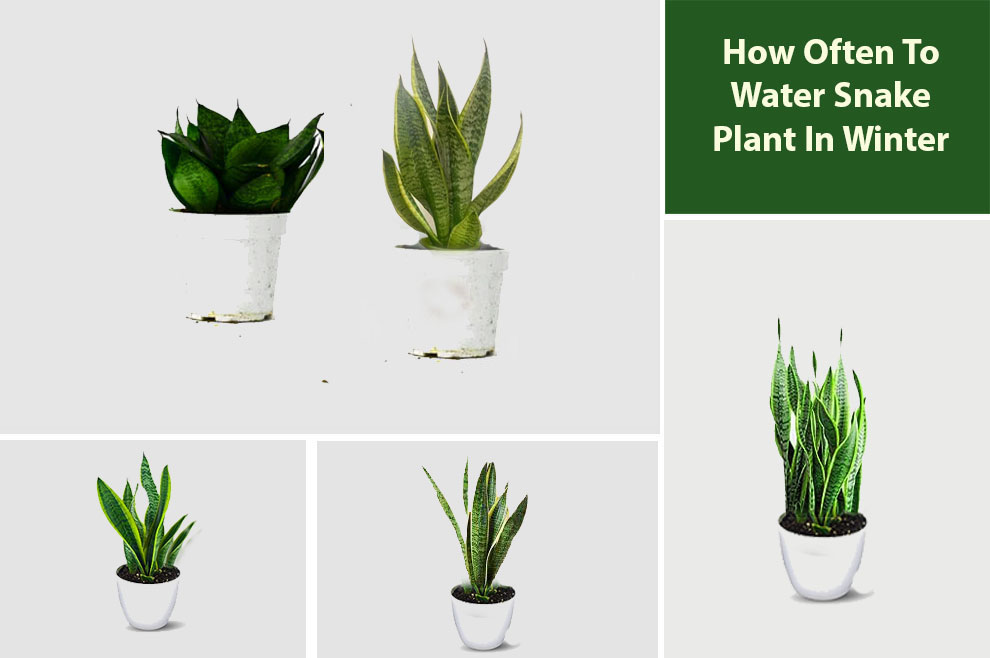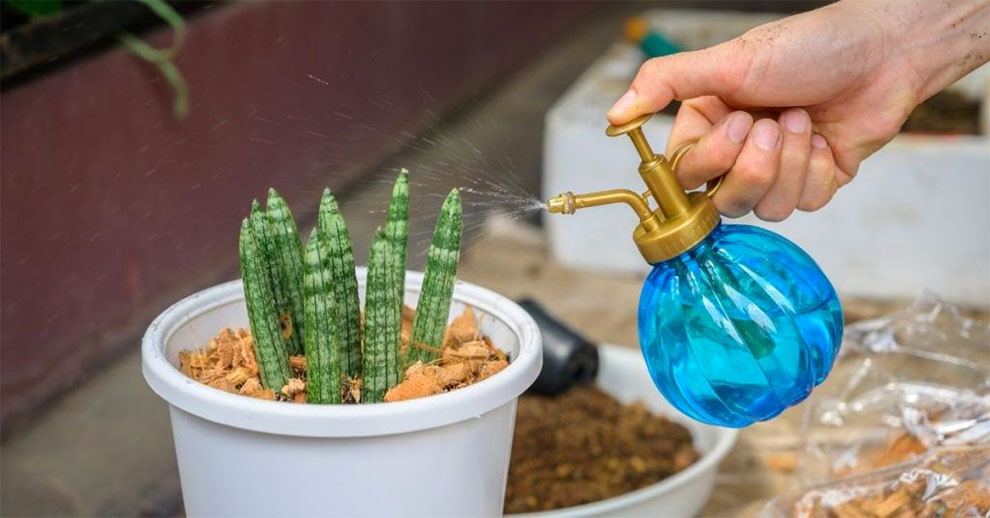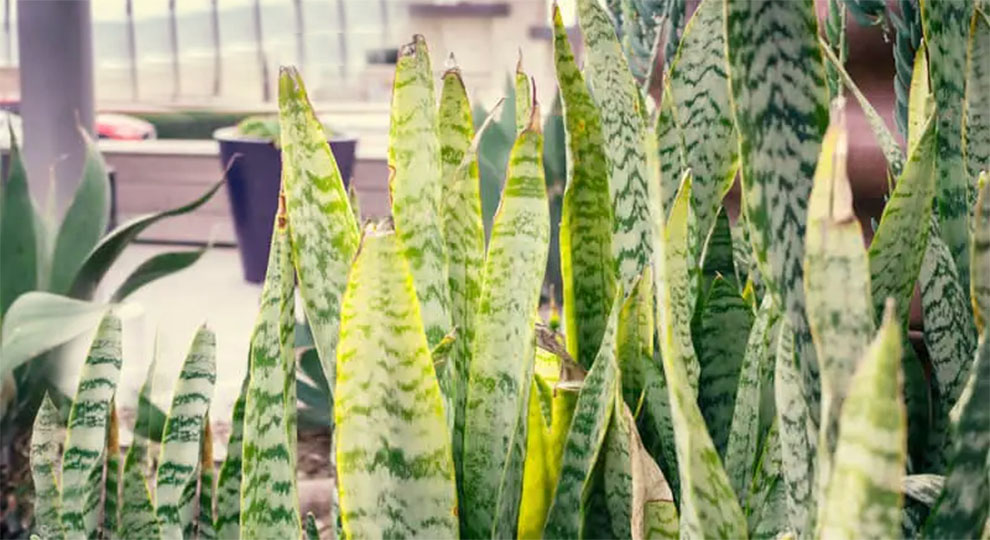How Often to Water Snake Plant in Winter: A Guide to Winter Care
During the winter season, your snake plant needs to be watered every 3-4 weeks only. If placed indoors, the water demand may even be lesser.

As the cold season sets in, it’s crucial to adapt your plant care routine to suit the unique needs of your snake plant during its dormant phase.
Understanding how often to water snake plants in winter and why watering frequency changes is key to ensuring the health and vitality of this beloved indoor companion.
Join us as we delve into the factors that influence winter watering, decipher signs of overwatering and underwatering, and uncover the optimal watering schedule for your snake plant.
Ideally, during winter, water snake plants sparingly. Allow the soil to dry completely between waterings.
But why is it so, we will find out by the end of this read. By the end, you’ll be equipped with the knowledge to confidently navigate the intricacies of winter watering for your snake plant varieties’ well-being.
Snake Plant’s Winter Dormancy
Snake plants enter a natural state of dormancy during winter, characterized by slower growth and reduced metabolic activity. This dormancy is influenced by factors like decreased sunlight and cooler temperatures.
As the snake plant’s growth rate slows, its water requirements decrease. Reduced sunlight hampers photosynthesis, causing the plant to use less water.
Overwatering during this phase can lead to root rot due to the plant’s diminished ability to absorb excess moisture.
Adjusting watering frequency to accommodate the plant’s dormancy helps prevent waterlogged soil and maintains the plant’s overall health throughout the colder months.
How Much Water Do Snake Plants Need in Winter?

During the winter months, the watering frequency for your snake plant needs to be adjusted to accommodate its natural dormancy. As the plant experiences reduced light and lower temperatures, its growth rate slows down, leading to decreased water needs.
Typically, you should water your snake plant less frequently during this period compared to its active growing season. Allow the soil to dry out almost completely between waterings, which may mean watering approximately every 3 to 4 weeks.
However, it’s essential to consider factors like indoor humidity and temperature variations.
Always monitor your plant’s soil moisture and be cautious not to overwater, as snake plants are susceptible to root rot when their water intake is excessive, particularly during the dormant phase.
Related: Snake Plant Lifespan | How to Make Snake Plants Grow Faster
| Do Snake Plants Bloom | Snake Plants Problems
Watering A Snake Plant In Winter Indoors
Snake plants typically require even less water indoors during the winter months. During their dormant phase in winter, snake plants experience slower growth and reduced metabolic activity, leading to decreased water requirements.
The combination of lower light levels and cooler indoor temperatures further contributes to their reduced need for moisture.
It’s crucial to adjust your watering routine accordingly. Allow the soil to dry out more thoroughly between waterings and avoid the temptation to overwater, as this can lead to root rot.
Regularly monitor the soil moisture and the plant’s overall condition to ensure that you’re providing the appropriate amount of water for your snake plant’s well-being during its winter dormancy.
You might also like to read about the benefits of having a snake plant indoors and the disadvantages of a snake plant.
What Are The Snake Plant Watering Techniques For Winter Care?
For winter care of your snake plant, use these watering techniques:
1. Soak and Dry: Thoroughly water the plant until water drains from the pot’s bottom. Allow the soil to dry out almost completely before watering again.
2. Bottom-Up Watering: Place the pot in a shallow container of water and let the plant absorb moisture through the drainage holes. Empty excess water after about an hour.
3. Avoid Frequent Light Watering: Instead of light, frequent watering, provide a deep soak to encourage deeper root growth and prevent water accumulation at the surface.
4. Spot Watering: Focus on watering directly at the base of the plant, avoiding water on the leaves or rosette to prevent potential rot.
5. Use a Watering Schedule: Keep track of when you water and adjust based on how quickly the soil dries. Err on the side of underwatering rather than overwatering.
6. Check Drainage: Ensure your pot has proper drainage holes to prevent water from stagnating in the soil.
By following this approach for snake plant care, you’ll help your snake plant thrive while minimizing the risk of overwatering, a common issue during its dormant winter phase.
Snake Plant Warning Signs of Overwatering and Underwatering In Winter

Identifying signs of over and under watering in a snake plant during winter is crucial for its well-being:
Overwatering:
1. Yellowing Leaves: Yellow or pale leaves, especially those at the base, indicate excess moisture causing root rot. Brown spots on Snake plant’s leaves can also be a sign of watering problems.
2. Soft or Mushy Roots: Lift the plant gently; if the roots are soft or mushy, overwatering might be the cause.
3. Wilting and Drooping: Surprisingly, overwatering can lead to wilting as roots struggle to function due to waterlogged soil.
4. Foul Odor: A musty or unpleasant smell around the soil area indicates root rot due to excessive moisture.
Underwatering:
1. Dry, Wrinkled Leaves: Leaves appear shriveled, dry, and wrinkled due to lack of water intake.
2. Slow Growth: Limited water supply slows down the plant’s growth rate during its dormant phase.
3. Snake Plant Leaf Curling: In an effort to conserve moisture, leaves might curl or fold inward.
4. Brittle Leaves: Underwatered plants often develop brittle, crisp leaves that break easily.
By closely observing your snake plant for these signs, you can adjust your watering routine to maintain optimal moisture levels during winter, ensuring the plant’s health and vitality.
